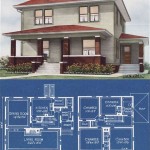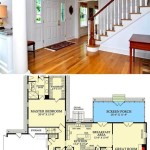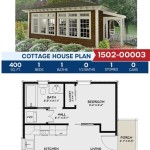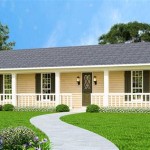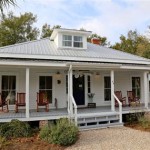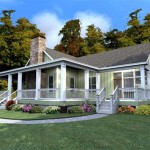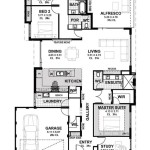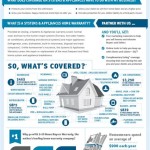Exploring the Enduring Appeal of Cape Cod Designs House Plans
Cape Cod designs house plans represent a timeless architectural style rooted in the early American experience. Originating in the 17th century, these homes were adapted from English prototypes to suit the harsh climate and limited resources of coastal Massachusetts. The simplicity and practicality of the Cape Cod design have allowed it to endure and evolve, remaining a popular choice for homeowners seeking a blend of classic appeal and modern functionality.
The initial Cape Cod homes were built by English colonists who adapted their familiar architectural styles to the new environment. These early versions were characterized by their symmetrical facades, low-pitched roofs, and central chimneys. The design was intended to provide efficient heating and withstand the strong winds and heavy snows common in the region. Over time, the basic design was refined, leading to several variations, each retaining the core elements of the Cape Cod aesthetic.
Today, Cape Cod designs house plans encompass a wider range of sizes, layouts, and features. While the fundamental principles of simplicity and functionality remain central, modern interpretations often incorporate open floor plans, larger windows, and enhanced energy efficiency. This adaptability allows Cape Cod style homes to fit into diverse landscapes and meet the evolving needs of contemporary families.
The Defining Characteristics of Cape Cod Architecture
Several key characteristics consistently define Cape Cod architecture. Understanding these elements is crucial for accurately identifying and appreciating the design style. These elements include the roof, the facade, the windows, and the overall layout.
The roof is perhaps the most recognizable feature of a Cape Cod home. Typically, they feature a low pitch with minimal overhangs. This design helps to shed snow quickly and efficiently, preventing excessive weight buildup on the roof. Dormers are sometimes incorporated to create additional living space in the attic, but they are generally small and unobtrusive, maintaining the clean lines of the roof. The roofing material is often cedar shingles or asphalt shingles designed to mimic the look of cedar, further enhancing the traditional aesthetic.
The facade of a classic Cape Cod home is typically symmetrical, with the front door located in the center. Windows are often evenly spaced on either side of the door, contributing to the balanced and harmonious appearance. Shutters, though sometimes decorative, were originally functional, providing protection from the elements. The siding is usually clapboard or shingle, materials that are both durable and aesthetically pleasing. The overall impression is one of understated elegance and timeless appeal.
Windows in Cape Cod homes are typically double-hung and multi-paned. The smaller panes of glass are a hallmark of the style, reflecting the limitations of early glassmaking techniques. The windows are often adorned with shutters, which add visual interest and a touch of historical charm. The placement and size of the windows are carefully considered to maximize natural light while maintaining energy efficiency. Modern Cape Cod designs may incorporate larger windows or variations in the window layout, but they usually retain the overall symmetrical arrangement.
The original Cape Cod homes were typically one or one-and-a-half stories in height. The layout was simple and functional, with a central living area flanked by bedrooms. The attic space was often used for storage or could be converted into additional living space. Modern Cape Cod house plans often incorporate open floor plans that combine the living room, dining room, and kitchen into a single, spacious area. This design approach reflects contemporary lifestyles and enhances the sense of connectivity within the home.
Variations in Cape Cod Designs
While the basic principles of Cape Cod architecture remain consistent, several variations have evolved over time. These variations reflect the changing needs and preferences of homeowners, as well as regional differences in architectural styles. The three main variations are the Half Cape, the Three-Quarter Cape, and the Full Cape.
The Half Cape is the smallest and simplest of the Cape Cod designs. It typically features a front door located to one side of the facade, with two windows on the other side. This design was often used for smaller homes or as an addition to an existing structure. The Half Cape offers a compact and efficient living space, ideal for individuals or small families. The asymmetrical facade distinguishes it from the other Cape Cod variations.
The Three-Quarter Cape is a slightly larger version of the Half Cape. It features a front door located off-center, with two windows on one side and one window on the other. This design provides a slightly more balanced facade than the Half Cape, while still maintaining the functional characteristics of the Cape Cod style. The Three-Quarter Cape offers more living space than the Half Cape and is suitable for small to medium-sized families.
The Full Cape is the most common and recognizable of the Cape Cod designs. It features a symmetrical facade with the front door located in the center, flanked by two windows on each side. This design offers the most balanced and harmonious appearance and provides ample living space for families of all sizes. The Full Cape can be expanded with dormers or additions to accommodate growing families or changing lifestyles.
Adapting Cape Cod Designs for Modern Living
Modern interpretations of Cape Cod designs house plans often incorporate contemporary features and technologies while preserving the essential character of the style. Adaptations are often made to improve energy efficiency, enhance functionality, and accommodate modern lifestyles. These adaptations might include integrating modern amenities while maintaining the historical aesthetic.
Energy efficiency is a primary concern for modern homeowners. Cape Cod designs can be adapted to incorporate energy-efficient windows, insulation, and heating and cooling systems. Solar panels can be discreetly integrated into the roof to provide renewable energy. These improvements can significantly reduce energy consumption and lower utility bills without compromising the aesthetic appeal of the home. Using sustainable materials such as reclaimed wood or recycled content siding can further minimize the environmental impact.
Modern lifestyles often require more open and flexible living spaces. Cape Cod house plans can be adapted to incorporate open floor plans that combine the living room, dining room, and kitchen into a single, spacious area. This design approach enhances the sense of connectivity within the home and provides ample space for entertaining. Larger windows and sliding glass doors can be used to bring in more natural light and connect the interior spaces with the outdoors. The kitchen can be designed with modern appliances, ample counter space, and a large island for food preparation and casual dining.
While the exterior of a Cape Cod home is typically understated, the interior can be customized to reflect the homeowner's personal style. Modern Cape Cod designs often incorporate contemporary finishes, fixtures, and appliances. Hardwood floors, granite countertops, and stainless steel appliances are popular choices. The color palette can range from traditional neutrals to more bold and modern hues. Lighting fixtures can be carefully selected to enhance the ambiance of the space and highlight the architectural details. The overall goal is to create a comfortable and stylish living environment that reflects the unique personality of the homeowner.
In conclusion, Cape Cod designs house plans offer a timeless blend of simplicity, functionality, and aesthetic appeal. Their enduring popularity reflects their ability to adapt to changing needs and lifestyles while retaining their essential character. Whether you are seeking a classic New England home or a modern interpretation of the style, a Cape Cod design can provide a comfortable, stylish, and enduring living space. The adaptable nature of the design ensures its place in architectural popularity for many years to come.

Classic And Cool Cape Cod House Plans We Love Houseplans Blog Com
Cape Cod Home Designs Spotlight Frank Betz Associates

Miscellaneous Houses Ilration And Floor Plans Of A Cape Cod Style House Published In The Star Library Congress

Country Cape Cod House Plans Home Design Gar 34603 20246

Tiny Cape Cod Center Hall Mid Century Cottage Style Nationwide House Plan Service T Plans

Plan 49128 2 Bedroom Cabin Construction With 1 339 Sq Ft

Cape Cod House Plans Floor The Designers

Cape Cod House Plan With 3 Bedrooms And 2 5 Baths 7645

Cape Cod Plan 3 362 Square Feet Bedrooms 2 5 Bathrooms 009 00207

Cape Cod House Plan With 4 Bedrooms And 2 5 Baths 3047

